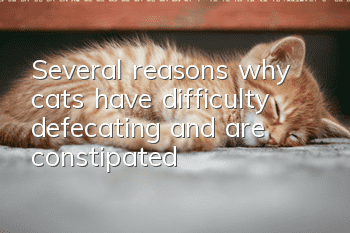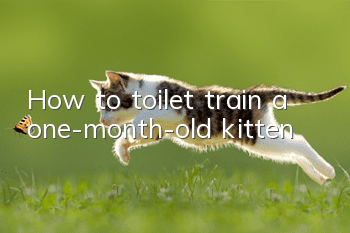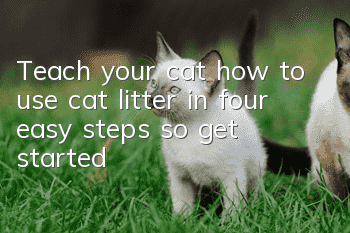Several reasons why cats have difficulty defecating and are constipated

Difficulty in defecation in cats is a problem we often encounter when raising cats. The clinical symptoms of difficulty in defecation are very obvious, which is constipation and irregular defecation. However, the treatment methods for constipation caused by different causes are different, and many diseases will cause constipation. , which requires us to trace the root cause and find the cause before we can treat it symptomatically.
Based on the cause, most constipation can be improved and cured through different treatments. But the premise is that differential diagnosis must be done, that is, what causes constipation. The causes of constipation have been summarized by previous people. Generally speaking, they mainly include the following:
1. Megacolon
In cats, colonic motility disorders, obstruction, or poor healing of pelvic fractures can all lead to Hirschsprung disease. Manx cats have been identified as having birth defects.
The most common symptoms in cats are depression, lack of appetite and occasional vomiting. The disease has no obvious symptoms at first and develops unknowingly. It is not until the constipation occurs repeatedly, and the degree and frequency increase, that the owner realizes the seriousness of the problem. Most cats are depressed and their coats appear messy because they cannot be combed. The rectum is usually empty and can be felt to be distended on digital examination. Abdominal palpation identified a large fecal mass in the colon.
For Hirschsprung disease, drug treatment can only change the symptoms in a short period of time and provide certain relief. Methods include: oral intestinal motility promoters, Dumic, hemp seeds, etc. Medications can also be administered anally, such as laxatives.
The best treatment is to surgically remove the diseased colon segment. In this case, the stool retention time is shortened and water absorption is reduced. Constipation is improved. During the operation, the doctor will choose total or partial resection depending on the situation.
It is worth noting that megacolon can also be caused by pelvic narrowing and neurological abnormalities caused by pelvic fractures. For diagnosis, the body usually checks the weight first. If the gait is abnormal, there is a large amount of feces on palpation. By palpating the anus with your fingers, you can identify rectal stenosis due to pelvic deformation. For this kind of treatment, surgery is usually used to relieve rectal compression.
2. Anal gland inflammation
Generally, cat owners will not express the anal glands because they do not understand the structure of the anal glands. The anal glands are located below the anus. There is a pear-shaped sac-like gland on the left and right sides, which opens into the anus. The anal gland sacs secrete anal gland fluid. When squeezed, brown, gray, liquid or viscous secretions will flow out, which smell. The smell is very strong.
If a cat has inflamed anal glands, it will mop its anus and walk forward or wipe the ground back and forth when it is quiet. It will also lick its anus and tail. There will be swelling and pain around the anus, and the cat will have difficulty defecating.
For the treatment of anal adenitis, we can use chlorhexidine to flush the ulcerated wound.Apply ambenin ointment and take an appropriate amount of antibiotics. During the treatment, the cat cannot use cat litter, and the cat must wear an Elizabethan ring to prevent licking the wound.
3. Nervous system diseases
Central nervous system diseases are most closely related to constipation. Disruption of neural regulation is the cause of constipation. Diseases related to the nervous system include spinal cord injuries, brain tumors, brain injuries, cauda equina tumors, etc. Paraplegia can also cause problems with emptying, especially of the colon. When a cat's cervical spinal cord segment is injured, the head and neck cannot be lifted and lie on the ground, the limbs are paralyzed and appear paralyzed, the muscles of the whole body twitch or spasm, and then constipation and anuria or fecal and urinary incontinence occur. The specific diagnosis can be through X The diagnosis was confirmed by radiograph and myelography.
- Cat cold and fever symptoms and treatments
- Cats can eat less and more frequently to lose weight
- The cat kept opening its mouth and panting in the car
- How to train a cat to use cat litter? What principles should be followed?
- How to stop cats from causing damage to the home, and how to train cats not to scratch the furniture?
- Will cats need to be quarantined for life if they have nasal congestion? Cat owners should pay special attention!
- Cat personality analysis, you can tell who owns what kind of cat
- How to tell if a Ragdoll cat is pregnant
- How to get rid of the odor where your cat peed
- Can cats eat spider plant leaves?



